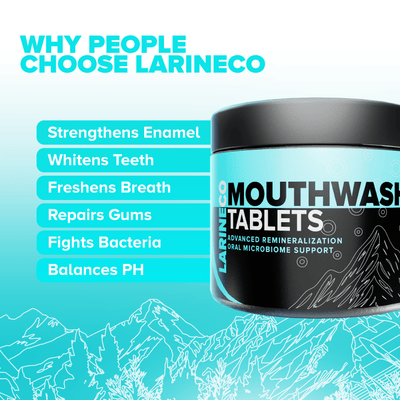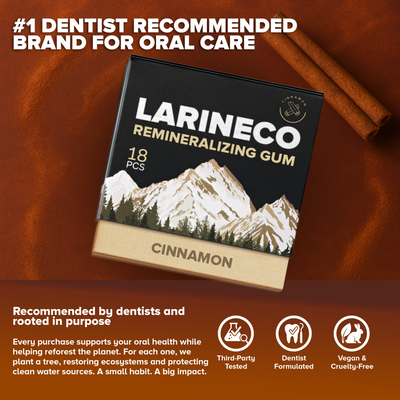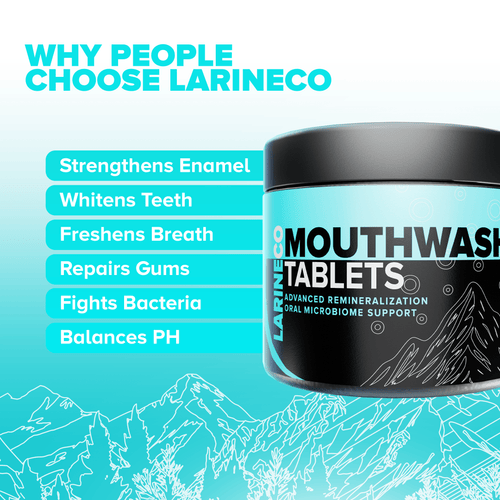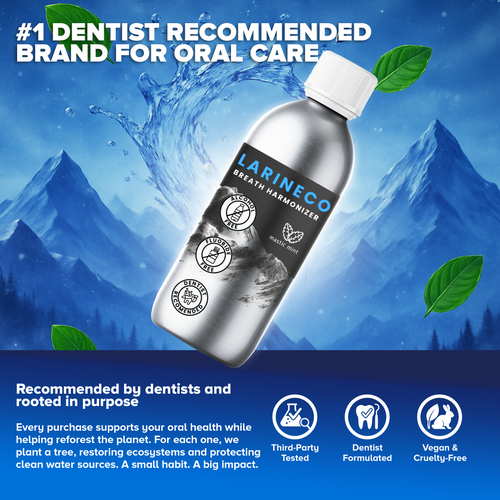What Causes Tooth Sensitivity & How to Fix It Naturally
What Causes Tooth Sensitivity?
Tooth sensitivity, also known as dentin hypersensitivity, arises when the inner layer of the tooth, called dentin becomes exposed. This exposure allows external stimuli (like cold air, sweet foods, or even gentle brushing) to directly affect the tooth’s nerve, leading to sharp, sudden pain.

Understanding Tooth Structure:
-
Enamel: This is the rigid, outermost layer of your teeth. It acts as a protective barrier against heat, cold, acids, and mechanical wear.
-
Dentin: Just beneath the enamel lies dentin, a porous tissue filled with microscopic channels called dentinal tubules. These tubules connect directly to the pulp, where the tooth’s nerves reside.

When enamel wears down or gums recede, these dentinal tubules become exposed. As a result, everyday triggers can easily stimulate the nerves inside the tooth.
Main Causes of Enamel Erosion and Dentin Exposure:
-
Acidic Foods and Drinks: Beverages like soda, citrus juice, wine, and vinegar-based dressings can erode enamel over time.
-
Aggressive Brushing: Brushing too vigorously or using a hard-bristled toothbrush can wear away enamel and contribute to gum recession.
-
Teeth Grinding (Bruxism): Chronic grinding or clenching wears down enamel, especially on chewing surfaces.
-
Gum Recession: Often caused by periodontal disease or overbrushing, gum recession exposes the tooth roots, which are naturally more sensitive.
-
Whitening Treatments: Bleaching agents can temporarily increase tooth sensitivity by penetrating enamel and irritating the pulp.
-
Acid Reflux or Eating Disorders: Frequent exposure to stomach acid, as in GERD or bulimia, accelerates enamel erosion.
Common Sensitivity Triggers:
-
Cold: Ice water, chilled air, or even cold weather
-
Heat: Hot coffee, tea, or soup
-
Sweet or acidic foods: Candy, citrus fruits, tomatoes
-
Touch or pressure: Brushing, flossing, or chewing
-
Dental procedures: Post-cleaning or whitening treatment
Hydroxyapatite’s Natural Desensitizing Action
Tooth sensitivity often stems from exposed dentin tubules that transmit stimuli directly to the tooth’s nerve. Nano-hydroxyapatite (n-HAp) solves this problem by sealing the exposed tubules in your teeth without using strong chemicals, numbing agents, or temporary nerve blockers. What makes nano-hydroxyapatite uniquely effective is its close mimicry of the natural structure of your teeth.
How Nano-Hydroxyapatite Mimics Natural Enamel
Hydroxyapatite is a calcium phosphate mineral that makes up:
-
~97% of enamel
-
~70% of dentin
-
~60% of bones

Nano-hydroxyapatite is a synthetic version of this compound, engineered at a microscopic scale (50–100 nanometers), small enough to penetrate the tiny dentin tubules and integrate with your enamel. Compared to Micro-Hydroxyapatite, Nano-hydroxypatite are much smaller.
Key features:
-
Biocompatibility: It's non-toxic and naturally recognized by the body.
-
Structural similarity: Because it chemically mirrors natural enamel, your teeth treat it as their own.
-
Bioactivity: It doesn't just sit on the surface; it interacts with your saliva and tooth surface to form a stable, protective layer.
This allows n-HAp to rebuild lost mineral and form a biomimetic seal over exposed tubules.
Occlusion Without Irritation: How It Blocks Sensitivity
Unlike conventional desensitizing agents (e.g., potassium nitrate or stannous fluoride), which attempt to calm nerve responses chemically, nano-hydroxyapatite works physically and biologically:
-
Seals Dentinal Tubules: The nanoparticles flow into open tubules and crystallize, forming a barrier that blocks external stimuli (like cold or acidic foods) from reaching nerve endings.
-
Integrates With Enamel: It fuses with the tooth surface and fills micro-defects, reinforcing weak areas while simultaneously reducing sensitivity.
-
No Harsh Ingredients: Traditional desensitizers may use numbing agents or astringents, which can irritate tissues over time. Nano-hydroxyapatite is gentle, making it ideal for long-term use even for those with compromised enamel or gum health.
-
Works in Saliva-Rich Environments: n-HAp performs better in real-world conditions because it’s water-insoluble. n-Hydroxyapatite continues remineralizing in the presence of saliva.
Nano-hydroxyapatite doesn’t mask sensitivity; it fixes the cause. By physically repairing and protecting the enamel-dentin interface, nano-hydroxyapatite provides a sustainable solution for sensitive teeth without compromising safety, comfort, or oral microbiome balance.
Why Gum-Based Delivery Works
Toothpaste works while you are brushing, but tooth sensitivity doesn’t follow a schedule; it can strike anytime. That’s where gum-based delivery comes in.
Larineco remineralizing gum contains nano-hydroxyapatite, the same active mineral found in your toothpaste, but in a form you can use throughout the day. Chewing stimulates saliva flow, which not only supports oral pH balance but also helps distribute hydroxyapatite particles across your enamel and into exposed dentin tubules.
This continuous micro-delivery mechanism helps keep enamel protected long after you’ve brushed. Whether it's after meals, coffee, or during a stressful moment when you grind your teeth without noticing, Larineco gum steps in to reinforce and soothe on demand.
It’s especially effective post-brushing and post-eating, when enamel is vulnerable and acids are active. And because it’s pocket-friendly, gum makes sensitivity relief something you can stick with without needing a sink or a mirror.
How to Use It for Maximum Relief
Getting the most out of hydroxyapatite for sensitivity relief isn’t just about what you use but how and when you use it.
1. Start with Brushing:
Use a hydroxyapatite-based toothpaste like Larineco remineralizing toothpaste twice daily, morning and night. This lays the foundation by coating enamel and dentin with nano-hydroxyapatite, beginning the remineralization process and occluding open dentin tubules.
2. Follow Up with Gum:
Chew Larineco Gum after meals, snacks, or acidic drinks, ideally 3 to 4 times a day. This ensures hydroxyapatite particles stay active throughout the day, especially during periods when your enamel is under attack from food acids or low saliva flow.

3. Focus on Timing:
-
After brushing: Helps seal and protect vulnerable enamel surfaces.
-
After eating or drinking: Balances oral pH and reinforces mineral delivery.
-
Midday or evening: Offers relief if sensitivity flares up between brushings.
Also Read: How To Chew Remineralizing Gum For Maximum Benefits
4. Don’t Rinse Immediately After Brushing:
To maximize hydroxyapatite adhesion, avoid rinsing your mouth right after brushing. Spit but don’t rinse; this allows the minerals to bind better to enamel and dentin surfaces.
5. Stay Consistent:
Relief from sensitivity builds over time. Stick to daily use for at least two weeks to feel the full benefits. Many users notice a significant decrease in discomfort within the first 7–10 days.
When you combine Larineco toothpaste and gum, you create a near-constant mineral-rich environment in your mouth, one that supports, soothes, and strengthens your enamel 24/7.
Choose a Formula That Works: Why LarineCo Stands Out
LarineCo uses clean, effective ingredients that rebuild enamel without the sting or burn of harsh chemicals.
-
Nano-hydroxyapatite strengthens and repairs naturally.
-
No SLS, no artificial flavors, no irritation, just gentle, science-backed care.
-
Designed for sensitive teeth and gums, with a smooth texture and mild mint flavor.
Unlike typical products that numb, LarineCo supports real, lasting repair. Try LarineCo gum today, available in refreshing flavors like mint, cinnamon, and berry. It’s easy, effective, and made to fit your lifestyle.










